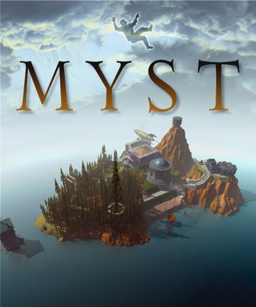
Myst is an adventure video game designed by Rand and Robyn Miller. It was developed by Cyan, Inc., published by Broderbund, and first released in 1993 for the Macintosh. In the game, the player travels via a special book to a mysterious island called Myst. The player interacts with objects and traverses the environment by clicking on pre-rendered imagery. Solving puzzles allows the player to travel to other worlds ("Ages"), which reveal the backstory of the game's characters and help the player make the choice of whom to aid.
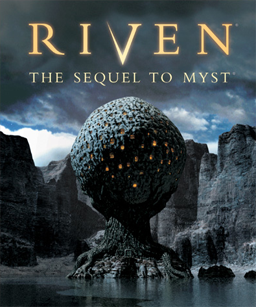
Riven: The Sequel to Myst is a puzzle adventure video game, the second in the Myst series of games. Developed by Cyan Worlds, it was initially published by Red Orb Entertainment, a division of Broderbund. Riven was distributed on five compact discs and released for Mac and Windows personal computers on October 31, 1997, in North America; it was later released on a single DVD-ROM in 1998. Riven was also ported to several other platforms. The story of Riven is set after the events of Myst. Having been rescued from the efforts of his sons, Atrus enlists the help of the player character to free his wife from his power-hungry father, Gehn. Riven takes place almost entirely on the Age of Riven, a world slowly falling apart due to Gehn's destructive rule.

Uru: Ages Beyond Myst is an adventure video game developed by Cyan Worlds and published by Ubisoft. Released in 2003, the title is the fourth game in the Myst canon. Departing from previous games of the franchise, Uru takes place in the modern era and allows players to customize their onscreen avatars. Players use their avatars to explore the abandoned city of an ancient race known as the D'ni, uncover story clues and solve puzzles.

Cyan, Inc., also known as Cyan Worlds, Inc., is an American video game developer and publisher based in Mead, Washington. Founded as Cyan Productions by brothers Rand and Robyn Miller in 1987, the company created the Myst series.

Myst III: Exile is the third title in the Myst series of graphic adventure puzzle video games. While the preceding games in the series, Myst and Riven, were produced by Cyan Worlds and published by Broderbund, Exile was developed by Presto Studios and published by Ubi Soft. The game was released on four compact discs for both Mac OS and Microsoft Windows on May 8, 2001; versions for the Xbox and PlayStation 2 were released in late 2002. A single-disc DVD version was later released for Windows and Mac OS.

4X is a subgenre of strategy-based computer and board games, and includes both turn-based and real-time strategy titles. The gameplay generally involves building an empire. Emphasis is placed upon economic and technological development, as well as a range of military and non-military routes to supremacy.
Myst is a franchise centered on a series of adventure video games. The first game in the series, Myst, was released in 1993 by brothers Rand and Robyn Miller and their video game company Cyan, Inc. The first sequel to Myst, Riven, was released in 1997 and was followed by three more direct sequels: Myst III: Exile in 2001, Myst IV: Revelation in 2004, and Myst V: End of Ages in 2005. A spinoff featuring a multiplayer component, Uru: Ages Beyond Myst, was released in 2003 and followed by two expansion packs.

Albion is a role-playing video game, developed and published by Blue Byte for MS-DOS. Originally released in German in 1995, the game was later translated to English for international release the following year. The game, which mostly involves traditional fantasy elements, such as magic, combined with a science fiction setting, sees players assume the role of a space pilot aboard a mining colony ship, who becomes stranded on a world set to be mined for its resources, despite it teeming with life and sentient races.

Rama is a point and click adventure game, developed and published by Sierra On-Line, and released on DOS and Microsoft Windows in 1996; PlayStation version was released in 1998, but exclusively in Japan. The game is based upon Arthur C. Clarke's books Rendezvous with Rama and Rama II, combining elements of their plots with a story that sees the player assuming the role of a replacement crew member for an expedition to investigate an interstellar ship and uncover its mysteries.

Nightfall is an American computer game released in 1999 by Altor Systems, Inc. Although claimed to be the first real-time 3D first person adventure game, there are earlier examples of 3D first person adventure games, however, such as Total Eclipse, released in 1988. It employs a three dimensional world and sprites for objects such as vases and rats, as well as true 3D objects such as blocks and statues. Essentially, the gameplay is a combination of 3D first-person shooters such as Doom, the gameplay found in Myst, with some additional elements.
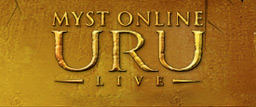
Myst Online: Uru Live is an open source massively multiplayer online adventure game developed by Cyan Worlds. The game is the multiplayer component to the 2003 video game Uru: Ages Beyond Myst. Like Uru, Myst Online takes place in 2000s New Mexico, where an ancient civilization known as the D'ni once thrived. The D'ni had the ability to create portals to other worlds or Ages by writing descriptive books of the Age. Players uncover clues and solve puzzles together; plot developments were added via episodic content updates.

Timelapse is a 1996 graphic adventure game developed and published by GTE Entertainment. Inspired by the game Myst, it tasks the player with the rescue of an archaeologist trapped in another dimension. The player navigates a series of time portals to locations such as ancient Egypt, Maya and the prehistoric Puebloan civilization, while solving puzzles and searching for clues to the archaeologist's whereabouts.

Drowned God: Conspiracy of the Ages is a 1996 science fiction adventure game developed by Epic Multimedia Group and published by Inscape. The game propounds the conspiracy theory that all of human history is a lie and that the human race's development and evolution were aided by extraterrestrials. The player attempts to uncover the truth through the course of the game by traveling to a variety of different worlds, interacting with historical and fictional characters, and solving puzzles.

The Secret of the Nautilus is a 2002 adventure video game, inspired by Jules Verne's 1870 science fiction novel Twenty Thousand Leagues Under the Seas. It was developed by Cryo Interactive and released for Microsoft Windows based PCs.

Ark of Time is a 1997 adventure game developed by Italian studio Trecision and published in 1997 for MS-DOS by Koei. A PlayStation version was released in 1998.
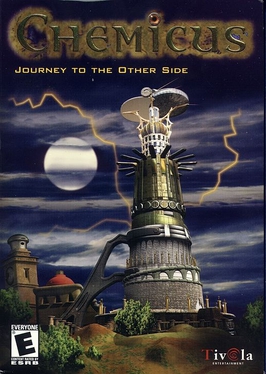
Chemicus: Journey to the Other Side is a 2001 educational adventure video game by Heureka-Klett as part of Tivola's "Quest for Knowledge" series. A sequel named Chemicus II: Die versunkene Stadt was released in 2002. The game was originally released in Germany.
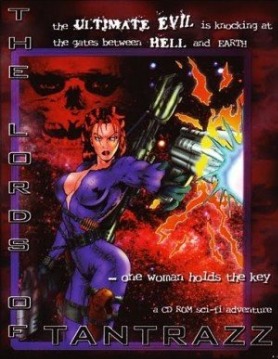
The Lords of Tantrazz is a 1996 adventure video game published by Atlantean Interactive Games.

The Arrival is a 1997 adventure game developed by Enteraktion and published by Live Interactive. It was released on Mac and Windows. It's an adaption of the film of the same name.
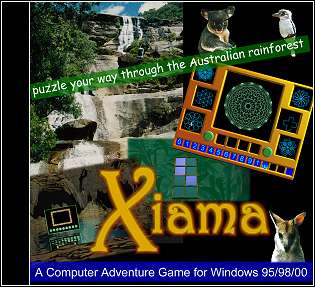
Xiama is a 2000 puzzle adventure game by Townsville-based Australian studio Mulawa Dreaming, released on Windows. The game was self-published by its developer, Peter Hewitt, off his website and at a stall in Townville's "Cotter's Markets".

Secrets of the Luxor is a 1996 adventure video game developed by American studio Mojave and published by Ubi Soft for Macintosh, Windows, and Windows 3.x.




















